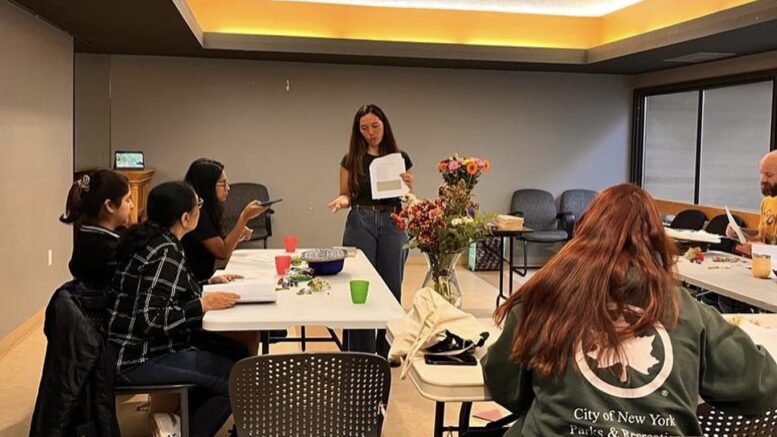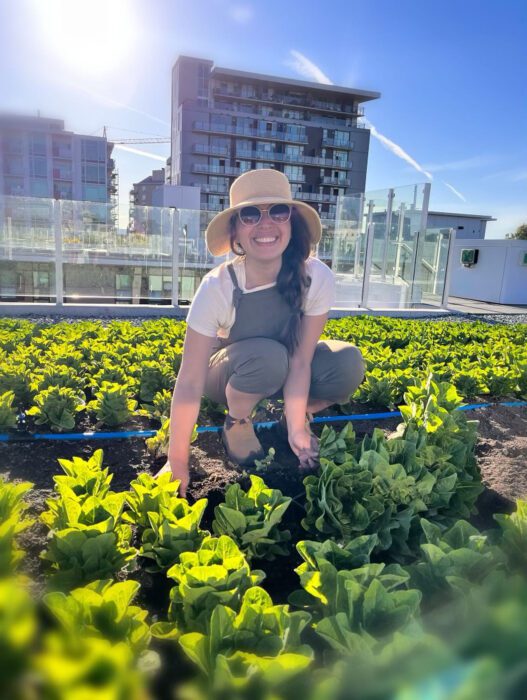Ever since Alejandra Vera, founder of Madre Selva was little, she had a connection with nature as a result from her mother’s and grandmother’s teachings.
Just as strong as her connection to them, she saw how important it is to take care of the planet.
“When my mother passed away, it made me very afraid to take care of her plants because I didn’t want to ruin them,” she said. “It was quite a process to convince myself that I could take care of them, love them like she did, and that’s when I began to have a connection with my mother through the plants.”
The first time Vera planted a plant in her own backyard in Toronto, she said, she felt happiness and accomplishment in knowing she could prosper in a new country, like this plant would.
Her passion for nature made her pursue alternative medicine in college, which lead her to horticultural therapy.
Four years ago, Vera founded Madre Selva a horticulture therapy practitioner. Vera offers online classes, as well as in-person workshops in Toronto and Calgary.
What is horticultural therapy?
Horticultural therapy is a practice that uses plants as a way to help people process their emotions or rehabilitate other aspects. This means gardening, appreciating and taking special care of plants.
HT’s objective is to focus on clear strategies to reduce depression in adults by using mental and physical practices. A study done by Science Direct, incorporated 22 case studies and showed that gardening reduces depression, anxiety, stress and mood disturbance, while also increasing quality of life, sense of community, and physical activity.
HT meetings are regulated by expertly prepared green advisors, according to the Canadian Horticultural Therapy Association.
This unique way of therapy can be beneficial to those who like to do things with their hands, and provides a sense of accomplishment and patience, Vera said. Horticultural therapy can be a new and interactive way to appreciate nature and allowing time to set in to experience changes, as described Landscape Ontario.
During her online sessions, Vera encourages her clients to come with their own plant for them to be able to work on watering, fertilizing and cutting any dead leaves the plant might have.
This helps her client put their anxious feelings into something productive, as Vera puts it.
Hugging trees is recommended: Vera
During in-person meetings, being outside or taking a stroll through a park is a regular practice Vera uses to help her clients see the world around them and the peace they can find in it.
“When we go out for a walk, the sounds of the birds, the flowers, the falling leaves catch our attention,” she said. “Nature allows us to have that full attention, without having many thoughts running through our heads.”
“Going to hug the trees is something great that I recommend, it is a way to recharge your energy and get rid of that stress and anxiety that you have inside of you,” Vera said.
No time for a walk? Focus on breathing
Those who aren’t nature lovers or simply aren’t in the mood to be outside in nature, can focus on their breathing instead. Pranayama is an ancient yogic practice of breath regulation.
Soul Dimension, based in Toronto, is offers a free 30-minute Breathing Experience online class every Wednesday.
“I invite anybody to explore the free class because it is a short experience that doesn’t require a lot, you’ll learn breathing techniques and it is super empowering for you once you learn how you can work with it every day for 10 or five minutes,” said Sylvie Horvath, owner of Soul Dimension.
During the session, attendee learn more about Pranayama practices and its benefits. Horvath also equips each of her students with a simple meditation that anyone can practice on daily, no matter where they are. Also, she teaches how to be mindful of one’s breathing, pay attention to it, and how to actually breathe.
For example, students learning how to inhale by taking deep breaths, relaxing their diaphragms and muscles to draw as much air in their lungs as possible. Then, they learn how to exhale, placing their hands on their stomaches and compressing their abdomens.
Horvath said her students tell her they have noticed lots of changes, even after one class only. Her students are noticing a reduction in tension and anxiety, feeling relief, and getting to heal while tapping into their breathing, she said.
“People really need to learn how to feel their emotions, let go of tension, and not always feel like you have to be in control,” Horvath said.
According to a study by Concordia University, breathing exercises are easy to do and can be done anytime and anywhere. Several techniques have been studied for their relaxation effect. Methods like the “4-7-8 technique” have shown to help people sleep better and overall reduce their stress levels.
Horvath has worked in health and wellness as a yoga instructor and breathwork facilitator for 30 years. Her teachings are inspired by the timeless wisdom of Yoga, and Pranayama, defined as breath control for purification and healing. According to a case study done by the Journal of Clinical and Diagnostic Research, Pranayama helps reduce “laziness, anger, delusion, and the desire to be different or better than others.”
This study takes a look at some benefits Yoga and Pranayama has on dental patients, they state that doing some breathing yoga for two to three minutes before giving a patient local anesthetic decreased the patient’s anxiety and the quantity of local anesthesia needed.
“The quality of our breathing has a huge impact on our physical and emotional health,” Horvath said.







